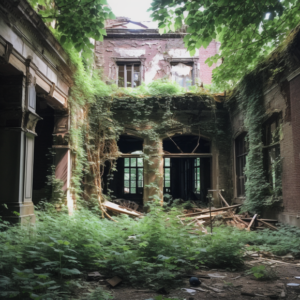Perched on a rugged hill in the Basilicata region of Italy, the haunting city of Craco stands as a testament to the ebb and flow of history. uninhabited since the 1960s, this once-thriving Italian town captivates visitors with its desolate beauty and crumbling architecture. In this evocative article, we embark on a journey through time to uncover the captivating story of Craco, exploring its rich history, the factors that led to its abandonment, and its enduring allure as a magnet for explorers and artists.
Section 1: The Rise of Craco
We delve into the origins of Craco, tracing its roots back to ancient times. From its medieval foundations to its prosperous periods as a feudal town, we explore the city’s growth, cultural heritage, and architectural gems. Craco’s strategic location atop a rocky hill provided both defensive advantages and a picturesque vantage point, attracting residents and fostering a vibrant community.
Section 2: Natural and Man-Made Challenges
Craco faced numerous challenges throughout its history, both natural and man-made. We explore the impact of geological instability, including landslides and earthquakes, which gradually eroded the town’s foundations. Additionally, we delve into the socio-economic factors, such as agricultural struggles and emigration, that contributed to the decline of Craco’s population and eventual abandonment.
Section 3: The Abandonment of Craco
The 1960s marked a turning point for Craco as the town faced increasing risks and challenges. We delve into the events and decisions that led to the forced evacuation of Craco’s residents, highlighting the government’s concern for their safety amidst the town’s deteriorating infrastructure. The emotional toll of leaving behind their homes and the subsequent transformation of Craco into a ghost town shaped the town’s modern identity.
Section 4: Craco’s Haunting Beauty
Despite its abandonment, Craco’s architectural splendor and ghostly atmosphere continue to captivate visitors. We explore the evocative charm of the town’s crumbling buildings, narrow streets, and silent squares. The interplay of light and shadow, coupled with the natural beauty of the surrounding landscape, offers a unique experience for photographers, artists, and those seeking to immerse themselves in the melancholic ambiance of the uninhabited city.
Section 5: Cultural Preservation and Tourism
Efforts have been made to preserve the cultural heritage of Craco and ensure its place in history. We delve into the initiatives aimed at documenting the town’s past, including archaeological research, restoration projects, and the establishment of a museum. Additionally, we explore the role of tourism in the revival of Craco, as visitors from around the world are drawn to its enchanting ruins and the opportunity to glimpse into the past.
Section 6: Craco’s Cinematic Legacy
Craco’s ethereal beauty has not gone unnoticed by the film industry. We explore the town’s cinematic legacy, serving as a backdrop for numerous movies and music videos. The atmospheric charm and architectural grandeur of Craco have provided filmmakers with a unique setting to evoke emotions and transport audiences to different eras and narratives.
Conclusion
Craco, with its timeless ruins and melancholic allure, stands as a testament to the passage of time and the resilience of human history. As we navigate the uninhabited streets and marvel at the crumbling facades, we are reminded of the transient nature of existence and the enduring beauty that can arise from the remnants of the past. Craco’s legacy, as a testament to human ingenuity and the forces of nature, invites us to reflect on the interconnectedness of our shared heritage.



